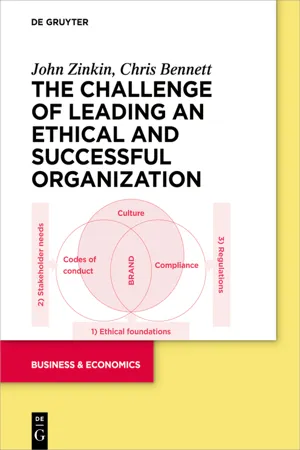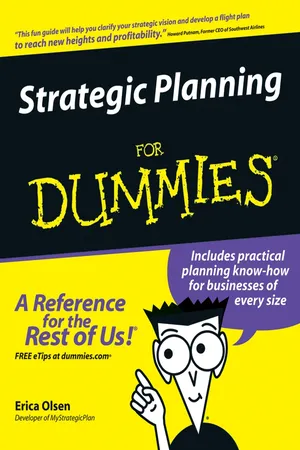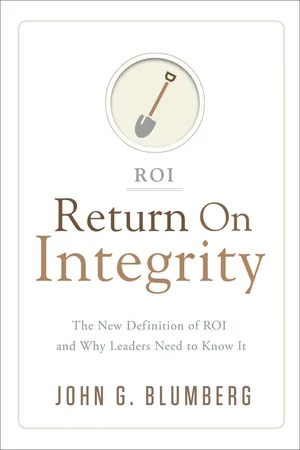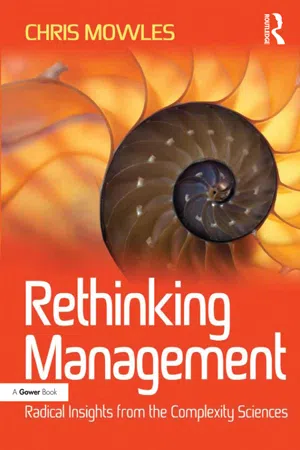Business
Organizational Values
Organizational values are the guiding principles and beliefs that shape the culture and behavior within a company. They reflect the core priorities and ethics of the organization, influencing decision-making, employee conduct, and interactions with stakeholders. By defining what is important to the company, organizational values help align employees and drive the overall direction of the business.
Written by Perlego with AI-assistance
Related key terms
8 Key excerpts on "Organizational Values"
- eBook - ePub
Building Top-Performing Teams
A Practical Guide to Team Coaching to Improve Collaboration and Drive Organizational Success
- Lucy Widdowson, Paul J Barbour(Authors)
- 2021(Publication Date)
- Kogan Page(Publisher)
Interestingly, little has been written specifically about beliefs in the context of entire organizations, though beliefs at a team level have drawn the attention of researchers, as we will discuss later. It is as if organizations expect employees whose wages they pay to automatically believe in the collective effort.Values, however, have been extensively explored. Senge (2006) has suggested that it is difficult to imagine any organization that has sustained some level of greatness not having deeply shared values. We like to think of Organizational Values as windows into an organization’s culture. They can help employees to prioritize, make decisions, and form the basis of how people aspire to communicate and treat each other. In recent years, we have witnessed an increasing number of organizations attempting to bring their values to life. Some examples we have come across include:- Values in Action (VIA) programmes. Where employees who demonstrate the organization’s values to an exemplary level are selected by their colleagues or manager, their work is profiled, and some form of reward is provided.
- Values 360 diagnostics. Where each employee is assessed, by a selected number of other employees, on each organizational value.
- Value champions. Where selected personnel from different departments lead initiatives to bring Organizational Values to life.
- Values from descriptions to actions. For example, from ‘respect’ to ‘we will listen deeply and seek to understand each other’.
- Value recruitment and progression policies. Where employees are recruited based on their ‘values fit’ and where progression is only possible if an employee is considered a ‘values fit’. This might also mean that people who are not a ‘values fit’ may choose to leave a company.
The challenge of ‘spoken’ versus ‘lived’ values
We consider an organization’s culture to be the sum of its individual, team and group behaviours – behaviours that should be driven by the organization’s values. However, as discussed earlier there is a difference between ‘spoken’ and ‘lived’ values. These differences can occur irrespective of the efforts made by the organization to embed their values. Imagine a new employee, who during their induction is proudly introduced to the organization’s values. During their first break, a new colleague starts to share stories about ‘how things really get done around here’. The new employee may already feel a disconnect between the ‘spoken’ and ‘lived’ values. - eBook - ePub
- Roger Gill(Author)
- 2011(Publication Date)
- SAGE Publications Ltd(Publisher)
Lencioni also suggests that there is much confusion about values. This in turn hinders any clear debate. He defines several types of values:Core values . Inherent, sacrosanct values that distinguish a company and serve as guiding principles for everybody’s behaviour. They are often the values of the founders, as with Hewlett-Packard’s ‘The HP Way’.Aspirational values . Values that an organization needs to be successful in the future but currently lacks. Lencioni quotes an example of a Fortune 500 company which cited ‘a sense of urgency’ as a core value because employees were complacent: this is not a core value but an aspirational value.Permission-to-play values . Like core values but merely reflect the minimum behavioural standard required of all employees. It is these – such as integrity, teamwork, quality, customer satisfaction, innovation – that we can see as common to many companies, but they do not create a distinctive identity.Accidental values . Arising spontaneously, these reflect the common interests or values of employees, such as dress code, thus creating a sense of inclusivity, but they may also limit a company’s opportunities and development by being too exclusive. They are false core values.Values, and the behaviour that reflects them, are the basis for effective relationships in business organizations, and they shape the business persona on which a brand and its reputation depend, says Mark Goyder.24 Thomas J. Watson Jr, son of the founder of IBM, has argued that beliefs (values) – IBM’s were respect for the individual and liberating the talents and energies of its people – must inform the vision, purpose and culture:Any organization, in order to survive and achieve success, must have a sound set of beliefs [values] on which it premises all its policies and actions. Beliefs [values] must always come before policies, practices and goals. The latter must always be altered if they are seen to violate fundamental beliefs [values].25 - John Zinkin, Chris Bennett(Authors)
- 2022(Publication Date)
- De Gruyter(Publisher)
Employees need to understand and connect with your purpose; and when they do, they can be your staunchest advocates. Customers want to see and hear what you stand for as they increasingly look to do business with companies that share their values. And shareholders need to understand the guiding principle driving your vision and mission. They will be more likely to support you in difficult moments if they have a clear understanding of your strategy and what is behind it. 8 Martin Wolf, writing in the Financial Times, asked important questions about the purpose of organizations: What am I as an influential individual, business leader and member of business organisations doing to increase the capacity of my country and the world to make sensible decisions in the interests of all? Am I mainly lobbying for special tax and regulatory treatment for our own benefit or am I supporting political action and activities that will bring the people of my divided country together? Am I prepared to pay the taxes that our success makes justifiable or am I exploiting every loophole that allows me to assign profits to tax havens that have contributed nothing to our success? What am I, my business and the organisations I am part of doing to discourage online harms, corruption, money laundering and other forms of dangerous and indeed criminal activity? What am I doing to support laws that will bring accountability to rogue business organisations and their leaders? What, above all, am I doing to strengthen the political systems on which successful collective action depends? 9 The answers to these questions are determined by the personal ethical values of individuals and the principles of the organizations in which they work. Principles These reflect the ethical values of the organization- eBook - ePub
- Erica Olsen(Author)
- 2011(Publication Date)
- For Dummies(Publisher)
(NJAWWA): Dedicated to the promotion of public health and welfare in the provision of drinking water of unquestionable quality and sufficient quantity. NJAWWA must be proactive and effective in advancing the technology, science, management, and government policies relative to the stewardship of water.Rotary International: To support its member clubs in fulfilling the Object of Rotary by: Fostering unity among member clubs; Strengthening and expanding Rotary around the world; Communicating worldwide the work of Rotary; and Providing a system of international administration.Small Business Technology Solutions: To provide small businesses the functionality of big business, within a small business budget.Sony: To experience the sheer joy of advancing and applying technology for the benefit of the public.Southwest Airlines: To provide the highest quality of customer service delivered with a sense of warmth, friendliness, individual pride, and company spirit.Sun Microsystems: To solve complex network computing problems for governments, enterprises, and service providers.University of Phoenix: To educate working adults to develop the knowledge and skills that enable them to achieve their professional goals, improve the productivity of their organizations, and provide leadership and service to their communities.Evaluating Your Organizational Values
Values are enduring, passionate, and distinctive core beliefs. They’re guiding principles that never change. Values are why you do what you do and what you stand for. Values are deeply held convictions, priorities, and underlying assumptions that influence your attitudes and behaviors. They have intrinsic value and importance to those inside the organization. Your core values are part of your strategic foundation.More and more companies are articulating the core beliefs and values underlying their business activities. Strong values account for why some companies gain a reputation for such strategic traits as leadership, product innovation, dedication to superior craftsmanship, being a good company to work for, and total customer satisfaction. A company’s values can dominate the kind of strategic moves it considers or rejects. When values and beliefs are deeply ingrained and widely shared by managers and employees, they become a way of life within the company, and they mold company strategy. They’re also called guiding principles - Stephen Taylor, Graham Perkins(Authors)
- 2021(Publication Date)
- CIPD - Kogan Page(Publisher)
As argued during the course of this section, the territory of ethics and ethics in business is complex, and very often individuals are faced with dilemmas where there may be no clear-cut ‘right’ or ‘wrong’ course of action. It is important to recognise that many factors such as an individual’s upbringing, their cultural background, experiences within education, and others besides affect their judgements in respect of ethical decision making, and this is, in part, why this territory is complex and problematic to manage. The following discussions pick up on this point in considerably more depth by beginning an exploration of personal values and judgement.Values
There has been substantial interest in the subject of values, with a literature base that has developed extensively over time. Practitioners and scholars alike have investigated the impact of personal values, and this extends to the business context where there has been considerable interest regarding how personal values influence conduct in organisations and business decision making. As far back as the mid-1960s researchers have questioned the impact of personal values on the formulation of corporate strategy (Guth and Tagiuri, 1965), arguing that whilst strategy formation on the surface may appear objective, it is in truth influenced at a fundamental level by the personal values of leaders and managers.By way of a definition, Kluckhohn (1951: 395) argues that a value is ‘a conception, explicit or implicit, distinctive of an individual or characteristic of a group… which influences the selection from available modes, means, and ends of action’. This chimes with more recent thoughts from Schwartz and Bilsky (1987: 551), who argue that values are ‘concepts about desirable end states or behavior that provide guidance to individuals in evaluating and choosing between alternative courses of action across a range of situations’. In both cases, values are highlighted to be individual conceptions that ultimately influence decision making, with it being understood that the actions of individuals are influenced at a fundamental level by their underlying value set. Values in themselves arise from a combination of different influences. They tend to be acquired at an early stage of life and may be transmitted between individuals via family, culture and educational experiences (Guth and Tagiuri, 1965). For instance, in a family setting parents may transmit certain values to their children through their use of rewards, punishments and their choice of examples. What is understood is that an individual’s value framework develops over time, but values are thought to be a relatively stable feature of an individual’s personality. It is important to recognise that there are various conceptualisations of ‘values’, although Van Hoorn (2017) argues that there has been convergence in more recent times towards a standard frame of reference that encompasses ten basic values. These are:- eBook - ePub
Return on Integrity
The New Definition of ROI and Why Leaders Need to Know It
- John G. Blumberg(Author)
- 2016(Publication Date)
- Greenleaf Book Group Press(Publisher)
establishing the core values. Just getting them out there! And then they get back to business. Real leaders understand that core values are the business.There is no place to go back to—you never left the business to create the values—the business lives and thrives in the midst of the values. It’s imperative to embrace this reality as you are establishing the organization’s core values.Like personal core values, organizational core values are not a nice team-building exercise or an executive feel-good activity for an expensive getaway retreat. Organizational core values are not a branding exercise for the marketing department, or an assignment for the “softer side of things” initiated or executed by the human resources department.Organizational core values are the sole responsibility of the leader—the CEO in publicly or privately held companies, the owner in an entrepreneurial adventure, or the leader at the very top of any organization. It’s not another item on the to-do list. It’s a powerful strategy waiting to be used—the most untapped and impactful strategy within the reach of any real leader.This is precisely the reason the leader’s experience in establishing his or her personal core values must precede addressing the organizational core values. A leader who hasn’t established her own personal core values (and, just as importantly, hasn’t lived the authentic struggle of doing so) is in no position to lead the development of the organization’s core values,much less live them out each day and lead others to do the same.Not now or ever will there be a time to delegate this process to a “wellprepared team,” or any team, for that matter.It is my recommendation that a leader also lead her team of direct reports through the process of establishing their own personal values before ever engaging them in a discussion of organizational core values. It’s only from there that a leader and her team are in a position to genuinely begin an authentic discussion of organizational core values. - eBook - ePub
Rethinking Management
Radical Insights from the Complexity Sciences
- Chris Mowles(Author)
- 2016(Publication Date)
- Routledge(Publisher)
This decision will always be mediated by power relations. Powerful invitations to submit to organisational values are a call to join a cult, as Collins and Porras (2005) make clear in their book which we discussed in Chapter 1, which can be understood as generating strong pressures for employees to belong and conform, rather than face exclusion. However, in many organisations it is my experience that there are often quite intense value conflicts taking place which have the potential for both creativity and destruction, which we will explore further below. Culture and Values in the Literature It is worth a small detour into the idea of organisational culture since it is much written about but nonetheless remains very amorphous as a concept. Alvesson (2002) notices the broad definitions used in the management literature to denote the term ‘culture’. Despite the lack of a solid definition and the largely superficial way in which it is addressed, Alvesson defines culture as ‘a frame of reference of beliefs, expressive symbols and values, by means of which individuals define their environment, express their feelings and make judgements’ (2002: 5). He notes that the term is used both ‘offensively’ and ‘defensively’ in the literature. In the offensive formulation culture can be used as a tool or a guiding concept to achieve effectiveness. Defensively, organisational literature sees culture as an obstacle to economic rationality and effectiveness. Alvesson describes how culture is often collapsed into a dualism of good and bad cultures, where good cultures are linked to harmony, consensus, clarity and meaningfulness (2002: 44) - eBook - ePub
- Carolina Machado, J. Paulo Davim(Authors)
- 2018(Publication Date)
- De Gruyter(Publisher)
Underpinning these espoused values are older and deeper ones that represent the core of the organization’s culture. These are fundamental assumptions about the nature of the world within which the organization operates and the relationship between the organization and that world. They include the purpose of the organization, the meaning of organizational participation, and the social identity of the organization and its members. Perhaps at some time these assumptions and values were in dispute. However, over time and through a continuous process of testing and verification, they have become completely accepted, rarely questioned, and essentially taken for granted within the organization and by organizational participants.Commenting on this level of deep assumptions and values, Schein argues that they are now regarded as basic assumptions within the organization, and that “if a basic assumption comes to be strongly held in a group, members will find behavior based on any other premise inconceivable” [1, p. 31]. In his later work, Schein returned to these deep cultural values and beliefs, describing them as shared tacit assumptions “which were at one time explicit values but, because they worked so well, became taken for granted and increasingly non-negotiable” [57, p. 109].1.5 Enacted values and organizational climate
One of the challenges in understanding organizational culture is that it can be regarded simultaneously as a description and an experience .As a description, organizational culture can be portrayed through it artifacts, espoused beliefs, and underpinning basic assumptions. Descriptions can be relatively objective, but they are also static: culture can all too easily become a series of posed photographs, not a spontaneous video. There is also a tendency in arriving at cultural descriptions to rely on what the organization itself propagates as normative values – expectations of what its culture is supposed to be and projections of what it aspires to be, rather than about what it actually is. Static descriptions of culture as rhetoric or culture as proclaimed often differ significantly from culture as actually experienced by organizational members [1 , 50 , 58
Learn about this page
Index pages curate the most relevant extracts from our library of academic textbooks. They’ve been created using an in-house natural language model (NLM), each adding context and meaning to key research topics.







